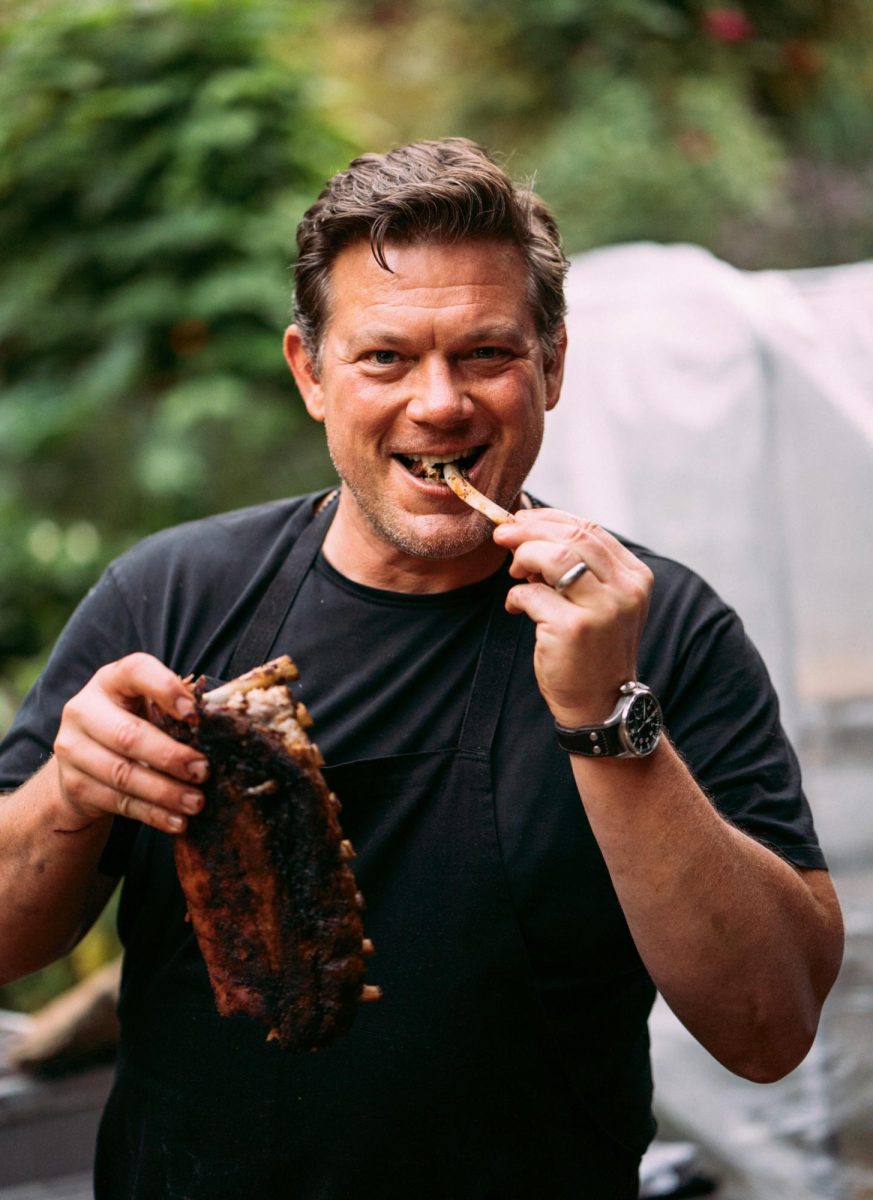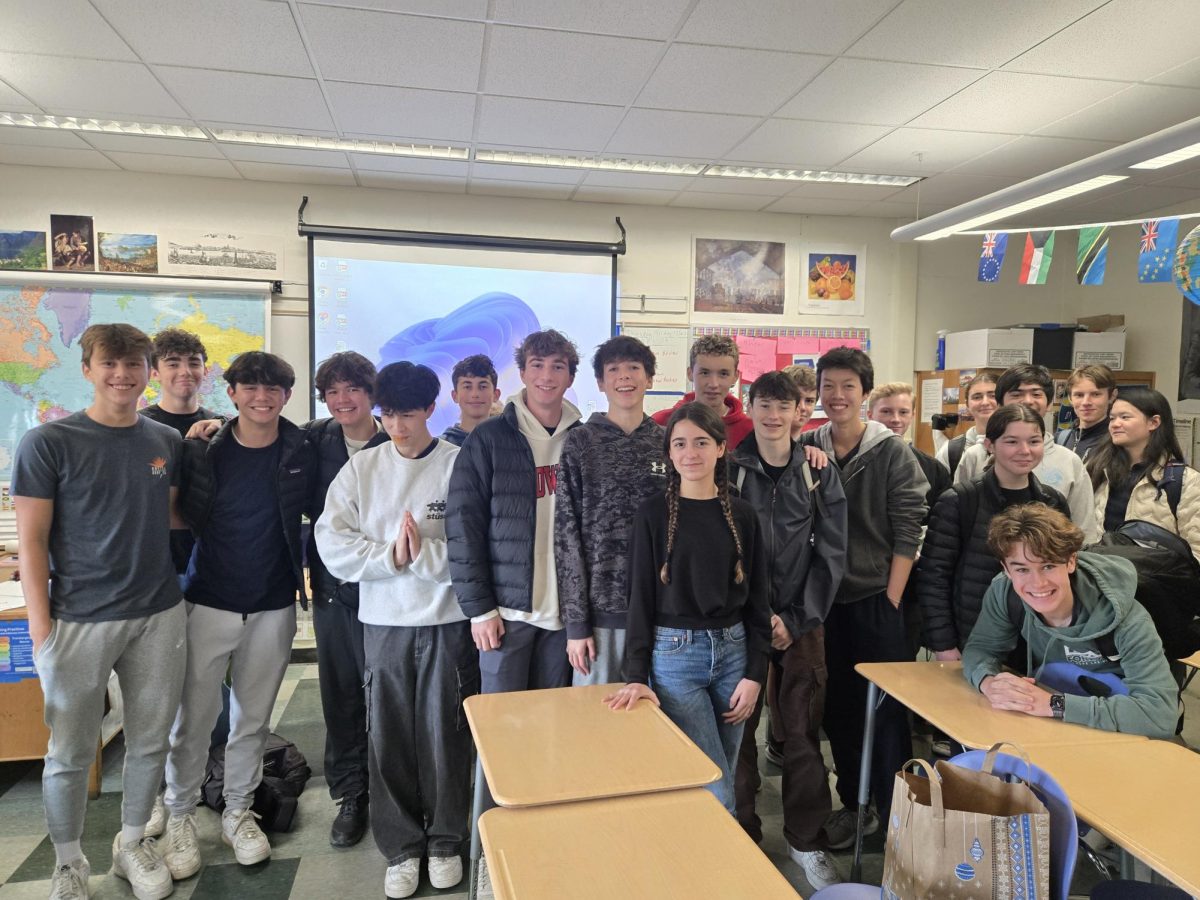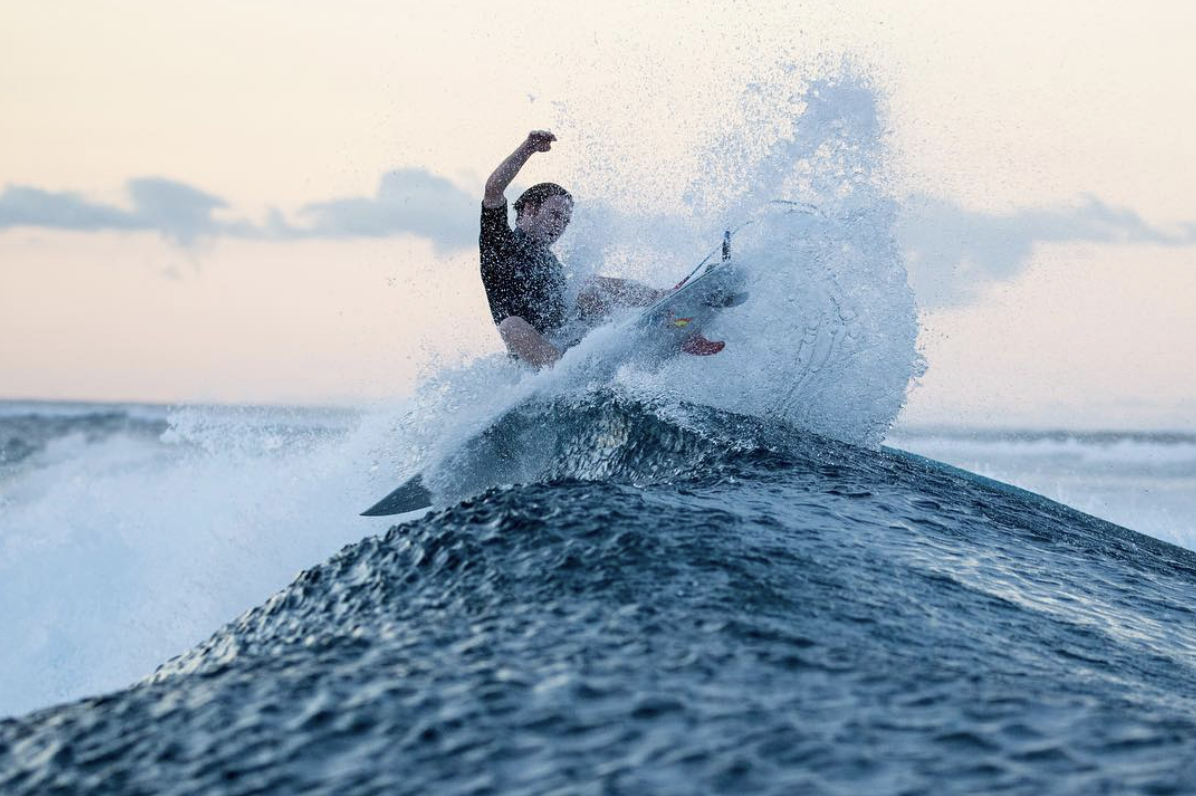John Carter holds up one of his paintings, which depicts a human face painted in grayscale. The face is otherworldly and alien—its twisted form would never appear anywhere other than the imagination.
“This guy is completely imaginary, but I used real shadows that I took from other people’s faces and kind of combined them,” Carter. a senior, said. “I wanted to take a person that was pretty normal and realistic and I wanted to bend it into a distorted figure that would only be existent in its own universe or world.”
Carter holds up another painting, of two girls sitting at a table, their faces bent and expressions lopsided. Carter explained that he created the painting based on a panorama photograph of the girls—they moved subtly during the photo, resulting in their contorted figures.
These paintings are two of many that Carter created in his AP art class. Every May, AP students from around the country send in a portfolio of work they have produced over the year, focusing on drawing or 2D design. A complete portfolio contains works that represent an artist’s breadth of skills, quality of work, and concentration on a specific topic or theme.
An artist must create 12 works for the breadth category, five for quality, and 12 for concentration, a collection that takes many months to complete. Last Friday marked the deadline for the portfolios to be sent to the College Board to be scored.
Carter said that his portfolio was inspired by his love of film and his interest in drawing people.
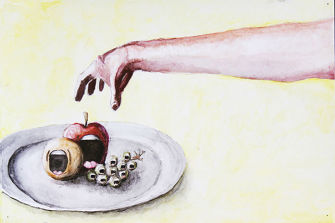
“The general idea is that I really like photographing people, and I like the idea of combining a logical, architectural, very mathematical idea with a creative, left-sided mind type of thing,” Carter said.
For many artists, the most difficult aspect of the process is getting started, specifically with their concentration section. The concentration is the most personal and unique aspect of the portfolio—the artist chooses to focus on a specific theme, concept, or medium.
“You never really have a concrete idea when you start creating, but you have some images and some vague idea that’s always following you around,” Nancy Luo, a senior in AP art, said. “The hardest part is trying to communicate that to others.”
Luo’s concentration was built around her interest in biology, specifically the relationship between nature and human behavior.
“For me, science is more of a stable factor in my life,” Luo said. “And I think that using art to explore that is more like a different way of thinking logically, a different way of looking at things.”
Senior Audrey Lyall also focused on humans and nature for her concentration, though her ideas took shape in a different way.
Lyall’s concentration revolved around human “dissatisfaction with the natural form,” and her art depicted humans with cosmetic body modifications. The purpose was to show how humans often attempt to change their appearance to something unnatural, according to Lyall.
“We’re like animals, and I think that humans kind of forget that, and they do a lot of things that make them different and make them stick out,” Lyall said.
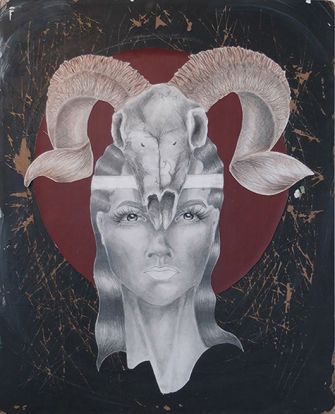
Like Luo, Lyall said that the hardest part of creating a portfolio was thinking of an idea for her concentration. Once she found that idea, she said, “it was pretty easy from there.”
Lauren Bartone, AP Art teacher, said that the class encourages students to be creative and independent when making art.
“In AP Art, I’m not giving specific assignments—I’m trying to guide [the students] to pursue their creative interests in a more thoughtful way or a deeper way,” Bartone said. “Everybody in the class is here because they enjoy making artwork and they don’t need to be told to work.
“Most of the students in AP Art have dedicated the last three or four years to making art, so it’s taken them a long time to get where they are,” Bartone said. “It’s not something that you sign up for because you’re casually interested in art—it’s evidence of really, really committed and passionate art-making.”

